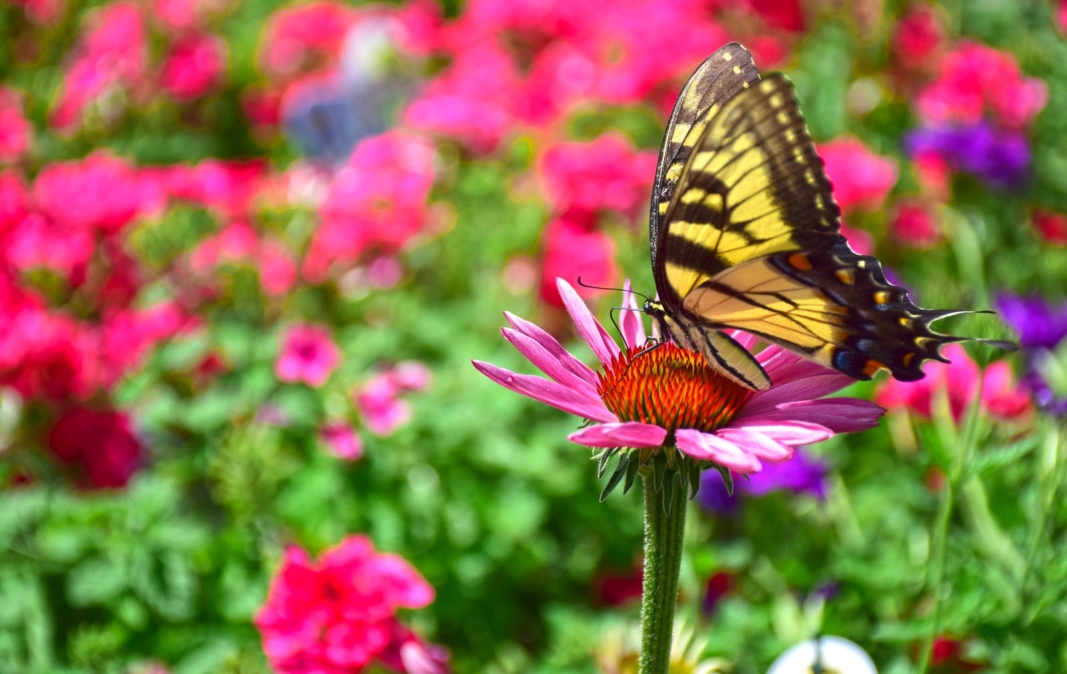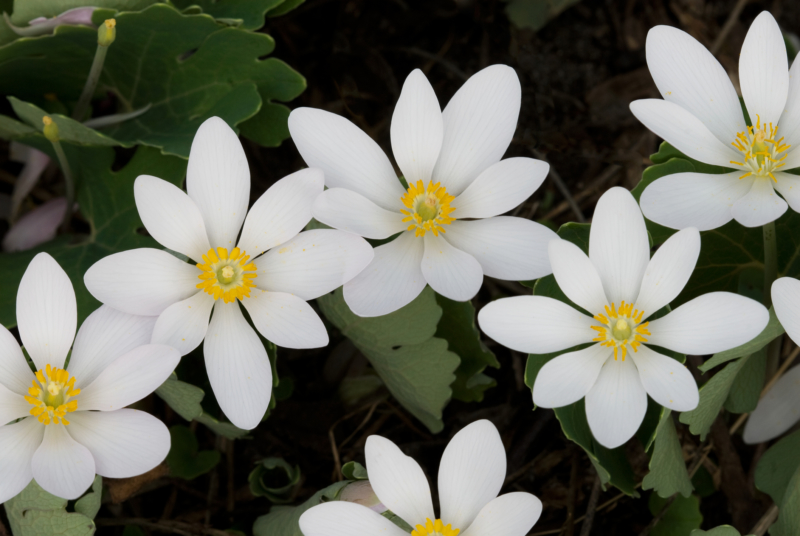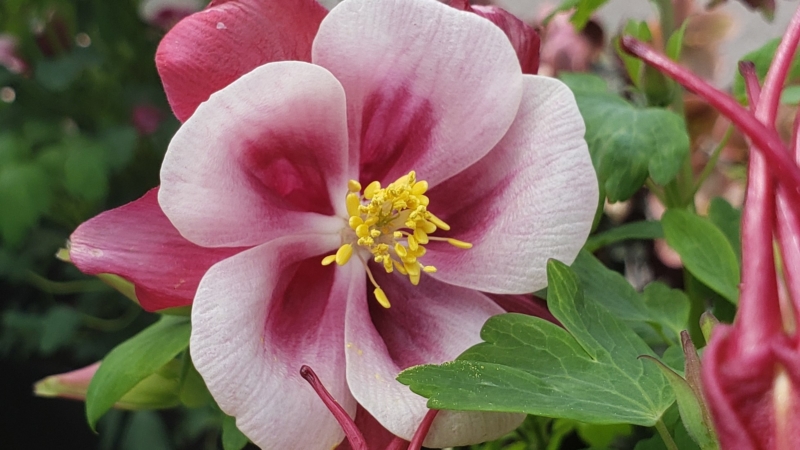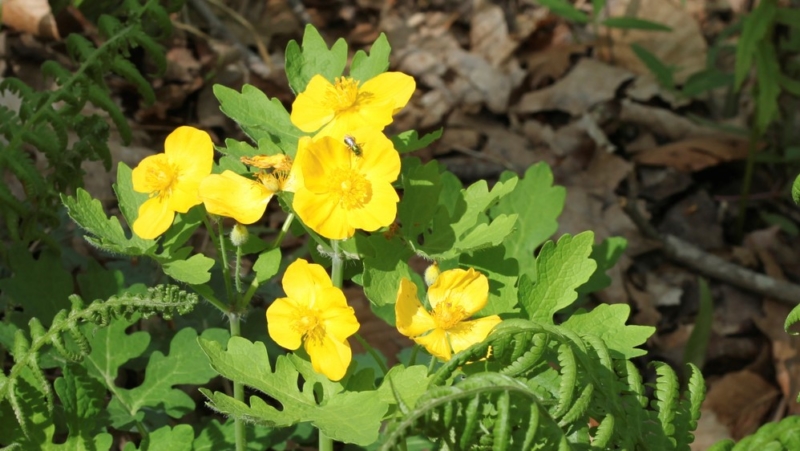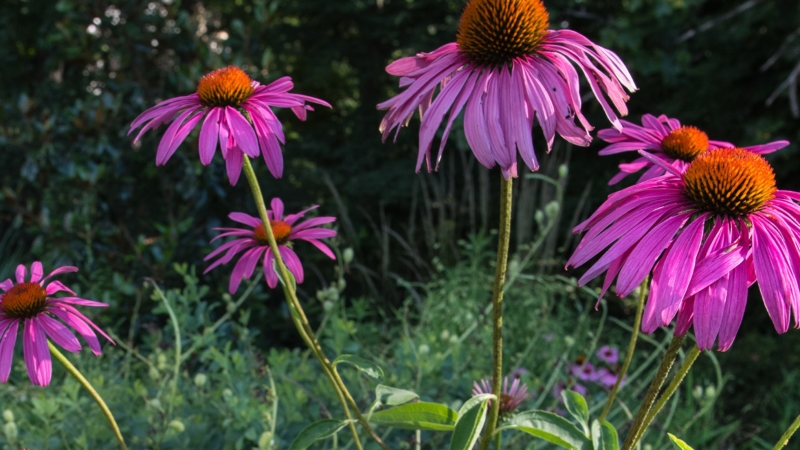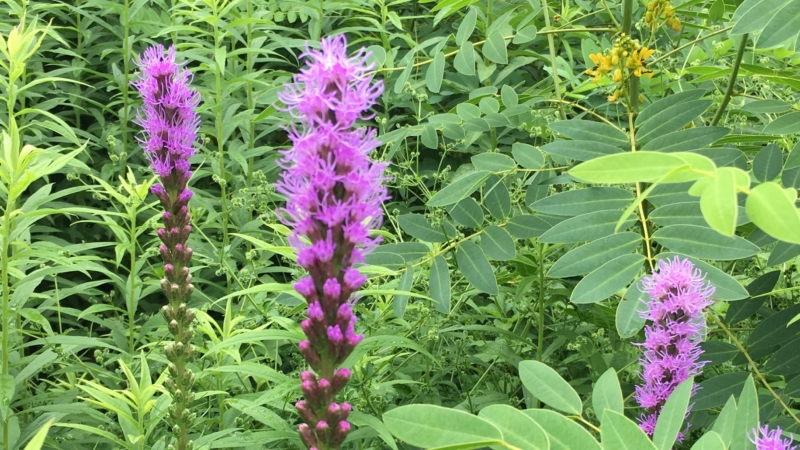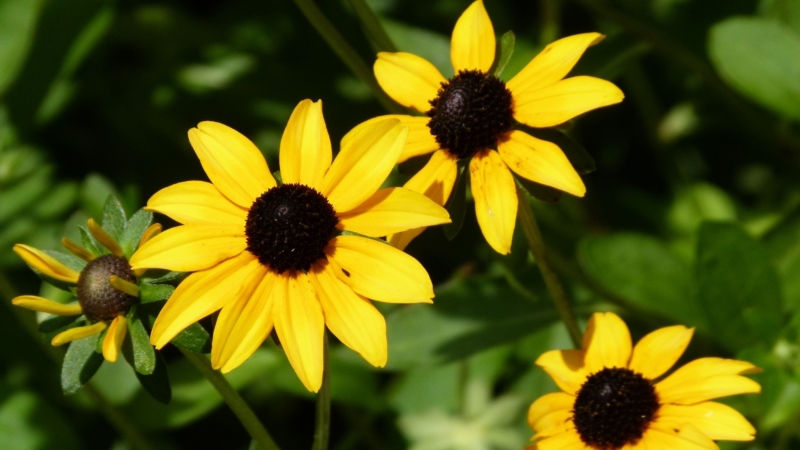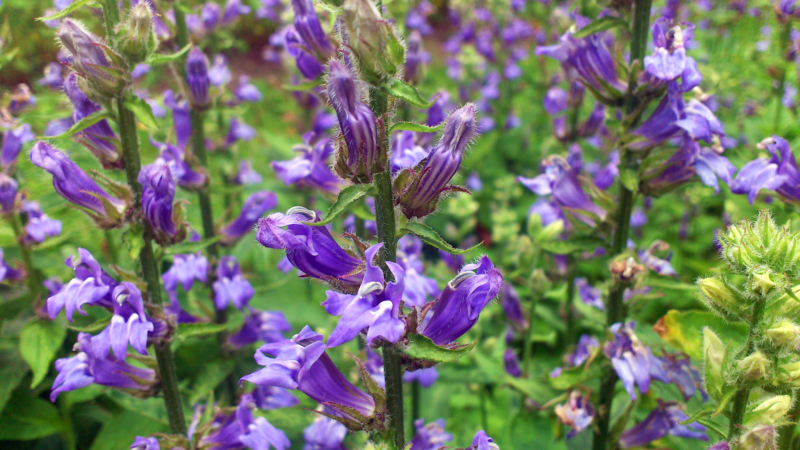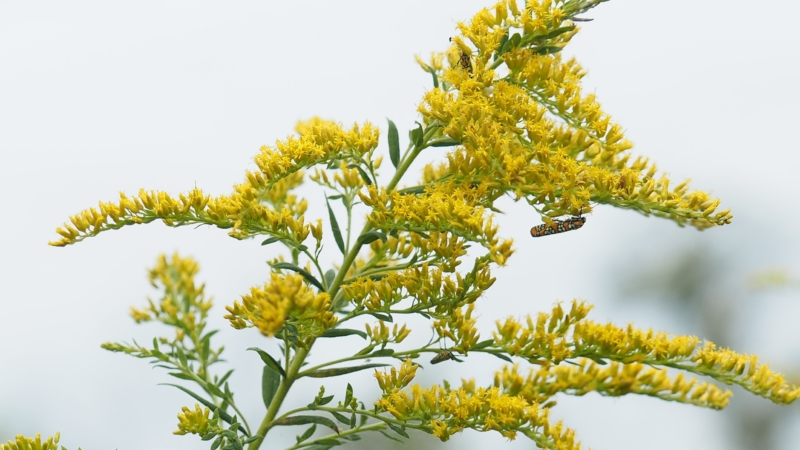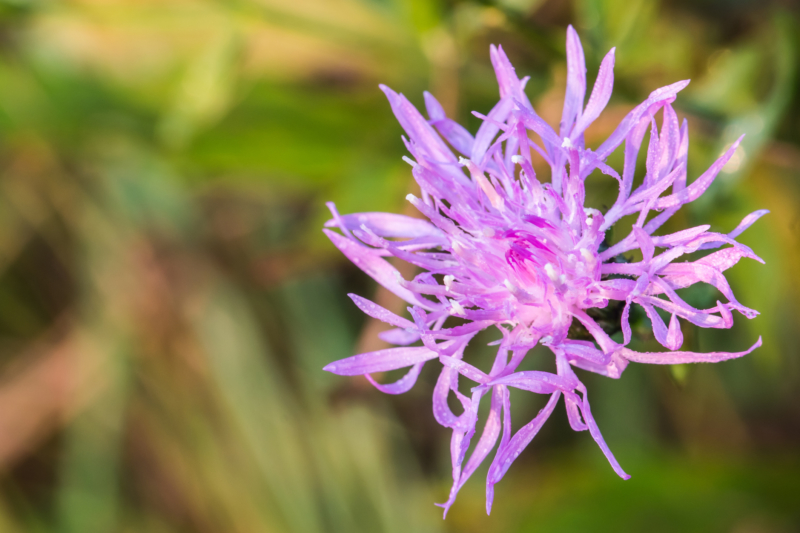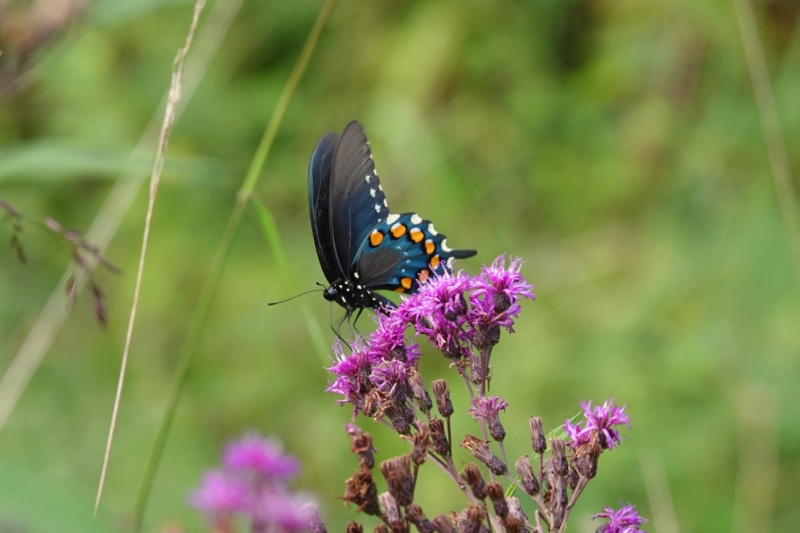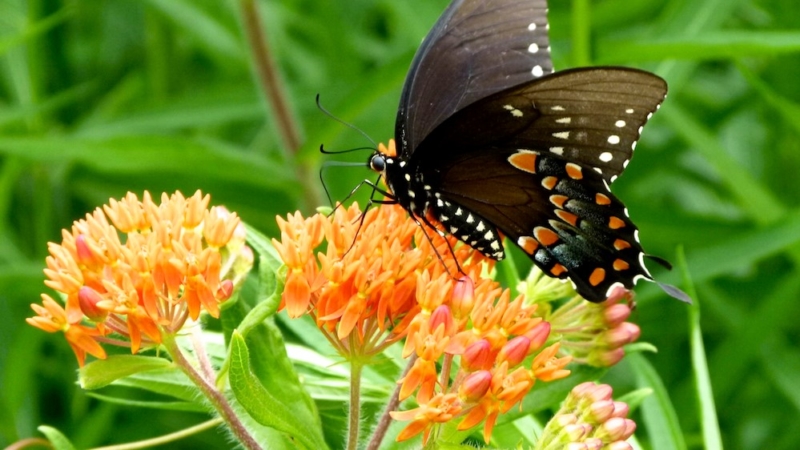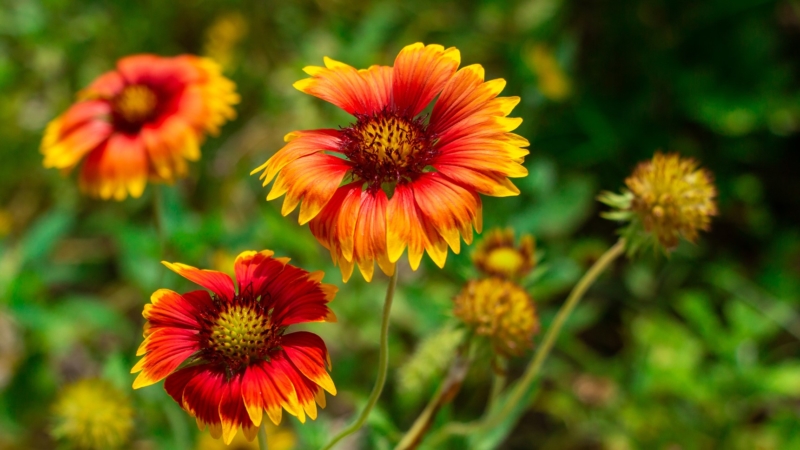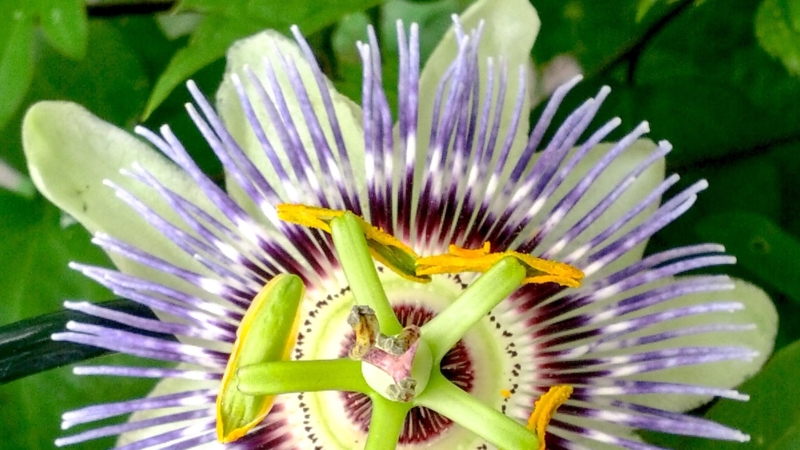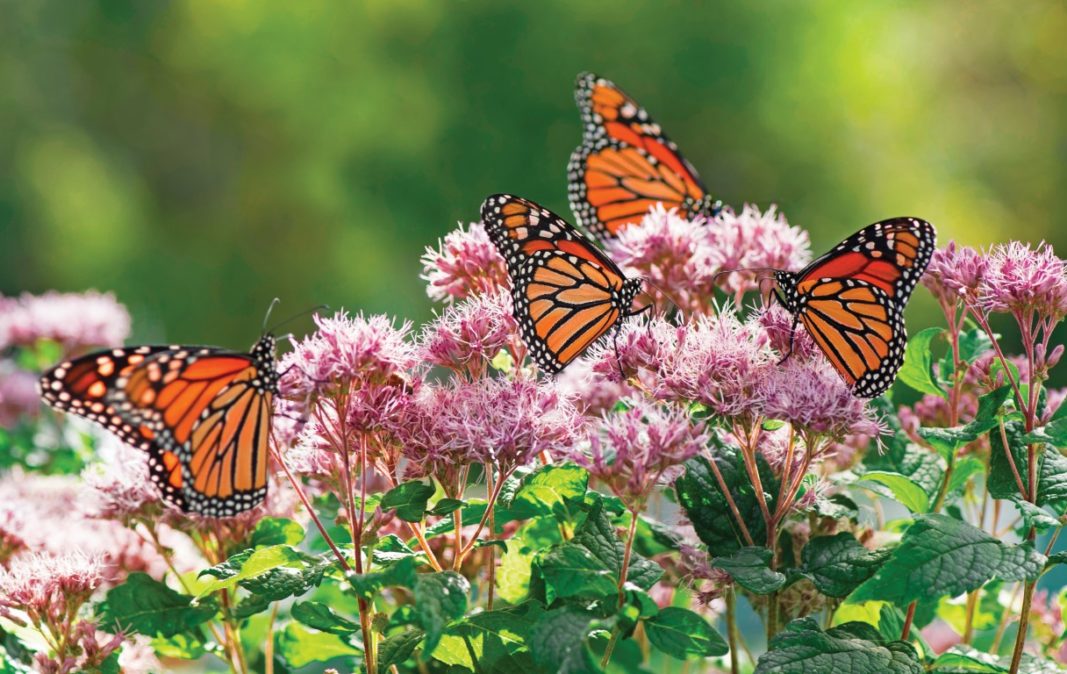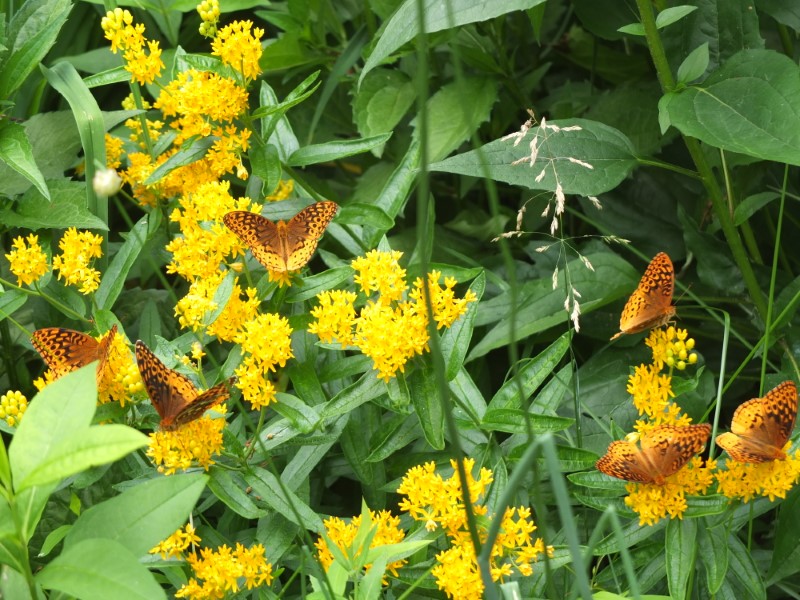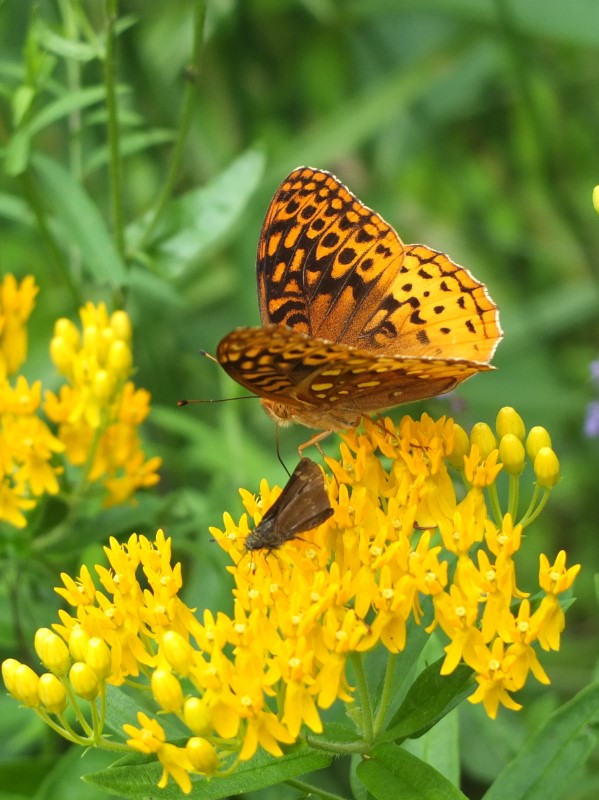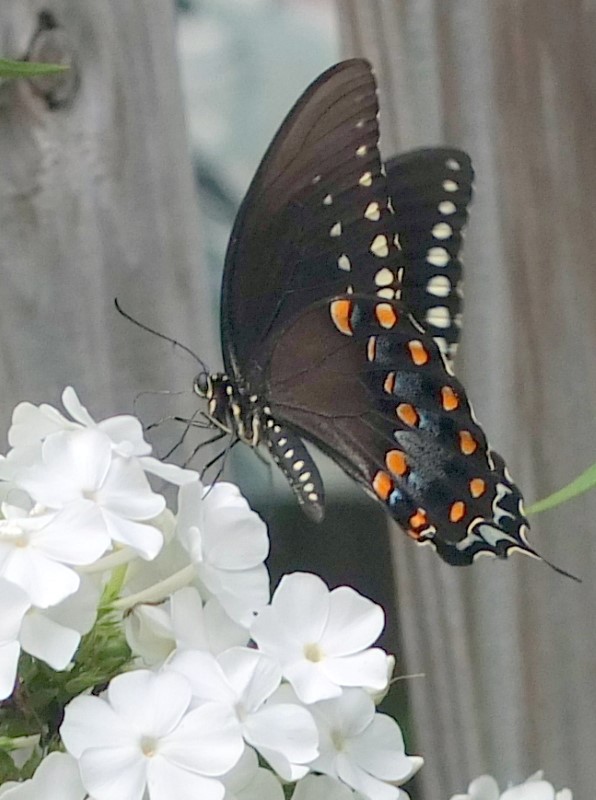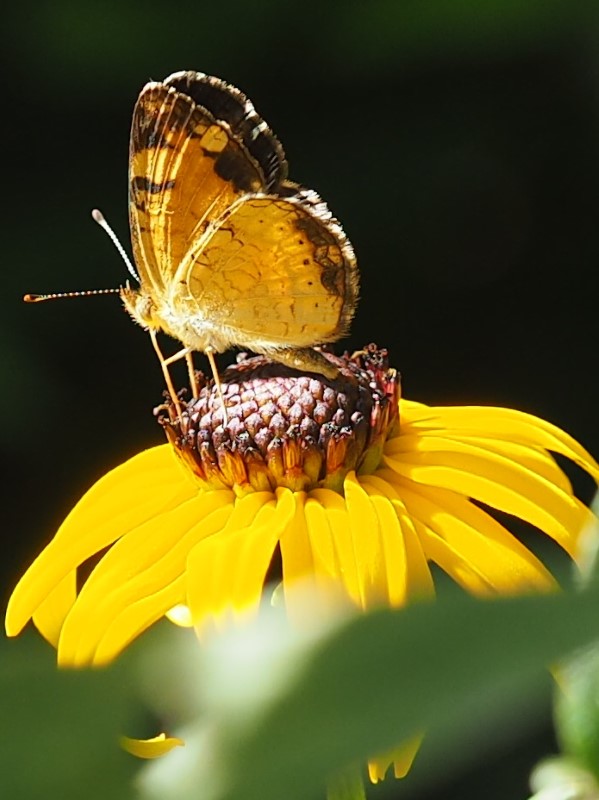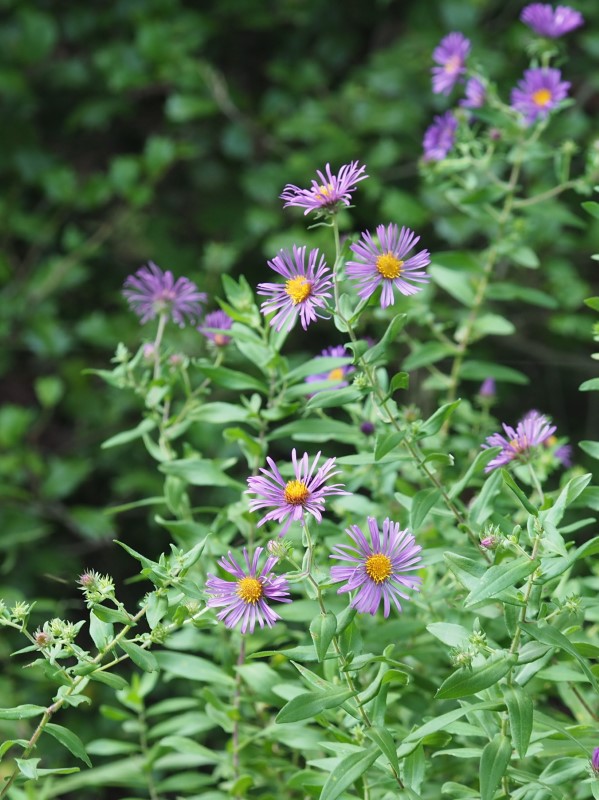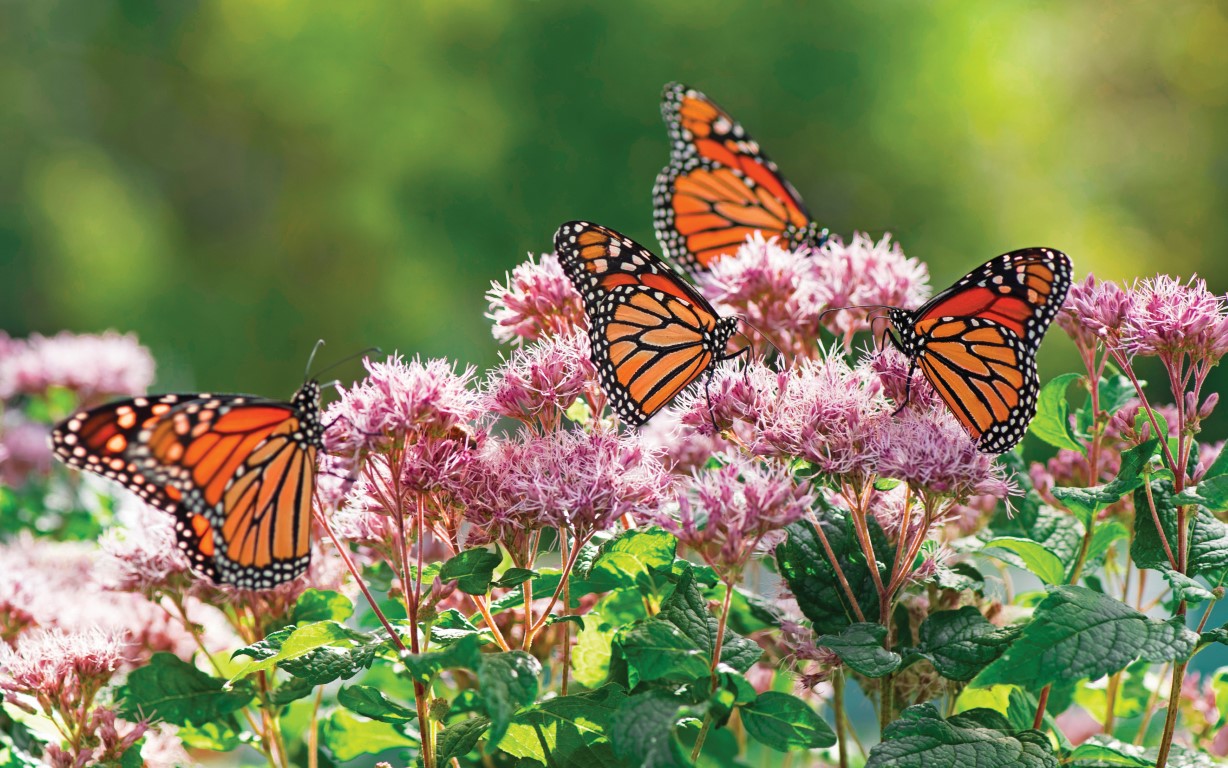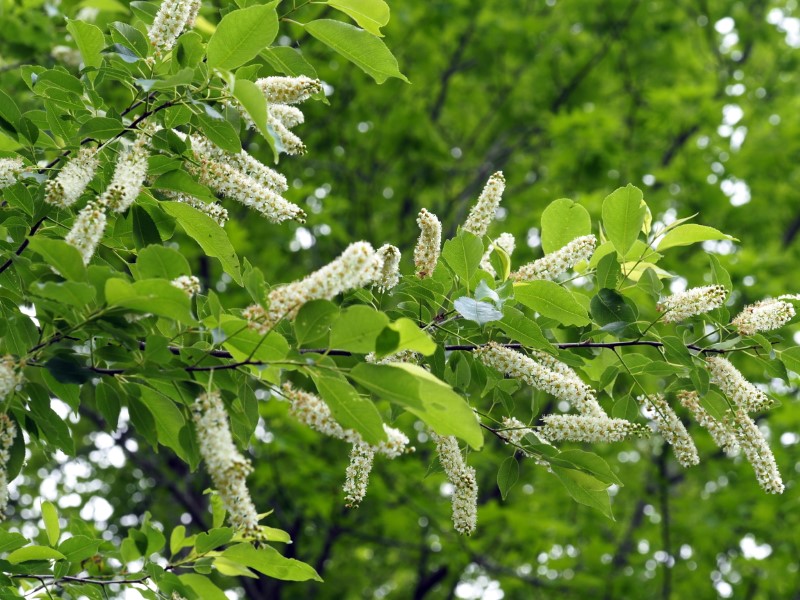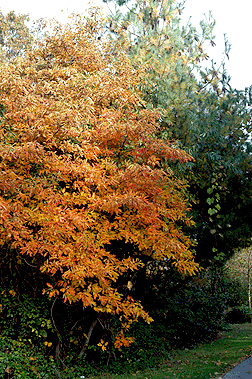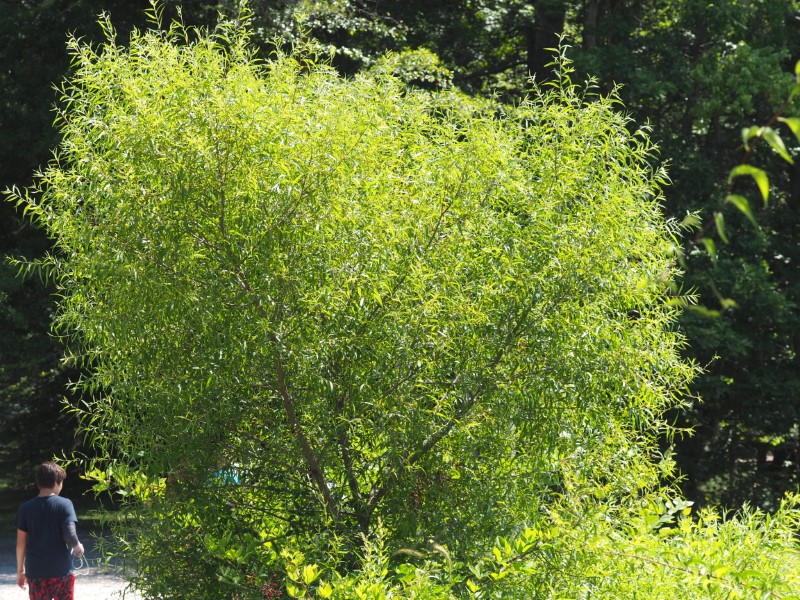Blooms for Pollinators from March to November
Terry Hershberger, Merrifield Plant Specialist
Throughout the growing season, we depend on bees, butterflies and other insects that transport pollen from plant to plant to fertilize our plants and successfully ensure that our gardens and farms generate seeds and fruit. To welcome these creatures during the spring, summer and fall, we can plan our gardens to provide an abundance of blooms and nectar for them from early spring through the onset of winter.
If you wish to welcome the bees, butterflies and other pollinators to your garden throughout the growing season, consider adding native plants to your garden that will bloom at various times from March to November, rather than planting so that you will experience one burst of bloom for a short period of time. Much like our surrounding region, you can design a garden which will feature different blooming plants throughout the growing season to support butterflies and bees.
Consider these options for continuous bloom.
Spring: March to May
Bloodroot
Blooms March to May
This white flower blooms in woodland gardens in part to full shade, making it a good choice for those with limited sunlight.
Columbine
Blooms April to May
This delicate flower can be grown in full sun to part shade. It is particularly attractive to hummingbirds and comes in colors ranging from light pink to dark red and blue.
Wood Poppies
Blooms April to May
A good choice for shady gardens. These plants are a native to the woodlands of our region and feature yellow flowers.
Summer: May to August
Coneflower
Blooms June to August
Purplish-pink blooms are attractive to butterflies and bloom throughout the summer. This plant is tolerant of drought when established.
Liatris spicata
Blooms in June
This member of the aster family features fluffy purple flowers atop talk spikes. This flower grows well in moist areas and is tolerant of clay soil.
Rudbeckia
Blooms May to July
A daisy-like yellow flower which is particularly attractive to butterflies. There are many rudbeckia species native to our region.
Late Summer/Fall: August to November
Blue Lobelia
Blooms August to October
This perennial grows best in wet soil and is native to wet locations in swamps and along streams. Blue tubular flowers grow in racemes reaching up to 3 feet tall.
Goldenrod
Blooms August to November
There are multiple native species of goldenrod blooming from late summer through the fall. As a native to the region, it tolerates clay soil.
New York Ironweed
Blooms August to October
This perennial features purple composite flowers atop tall stems. It is tolerant of wet and clay soil. It requires full sun.
Workhorses
These plants bloom for most of the growing season, from May or June through fall.
Asclepias tuberosa (Butterfly Weed)
Blooms June to frost
This milkweed species is a food source for monarch butterflies and a favorite nectar source of butterflies overall.
Gaillardia pulchella
Blooms June to frost
This plant tolerates poor soil and dry heat. It’s petals may be red, yellow, or both. Consider leaving spent flowers for the birds.
Purple Passionflower
Blooms July to September
A climbing, drought tolerant vine with unique fringed flowers. The blooms are a particularly loved by bees.


